
by Marie Arick | Jan 21, 2021
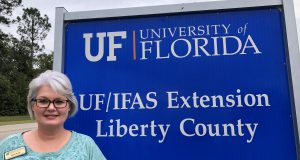
Marie Arick, UF/IFAS Extension Liberty County
Marie Arick is in her second year as the UF/IFAS Liberty County Extension Director and 4-Agent. She also is the Family and Consumer Sciences Agent for both Liberty and Calhoun Counties. Marie has been with University of Florida IFAS since 2015, originally serving as the Family and Consumer Sciences Agent in Jackson County. She received her B.S. in Exercise Science and M.S. in Health Promotion from Mississippi State University. Her Extension specialty areas are health, wellness, food and nutrition, and 4-H youth development.
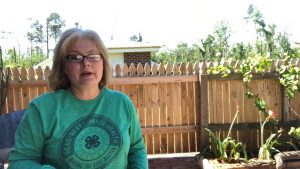
Marie Arick, Liberty County 4-H
Marie has provided many nutrition, food safety, and health and wellness educational programs/events including A Healthy Table Cooking School, Artisanal Cheese Making, Prevent T2: The National Diabetes Prevention Program, First-time Homebuyer, and the Annual Heart and Sole 5K. Her programming efforts in 4-H have included Food Challenge, Culinary Arts, Leadership, Community Service, and a variety of day camps and residential camps. Before joining UF/IFAS, Marie was employed with Texas A & M AgriLife Extension Service, where she was the Eastland County Extension Director and Family and Consumer Sciences Agent while also supporting 4-H programming.
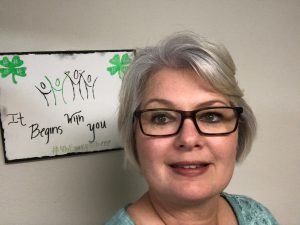
Marie Arick, UF/IFAS Extension Liberty County
Marie shares what she enjoys most about her career: “Being an Extension Agent is such a rewarding career, not only do I provide research-based education in my community, but I also reap the reward of watching participants gain knowledge, learn new skills, and apply those skills. I love having people share how they have improved their lives or used what they have learned. Some examples are a positive health outcome, achieving home ownership, successfully competing in a judging competition, or learning to prepare a new recipe.”
Contact Marie at 850-643-2229, jmarick@ufl.edu, or at her office located in the Liberty County Civic Center at 10405 NW Theo Jacobs Way, Bristol.

by Melanie Taylor | Nov 24, 2020
2020 has been a year of many changes and challenges due to the Coronavirus pandemic, which unfortunately will continue into our holiday season. To protect our friends, family and community members we must continue following the science-based guidelines provided by the Centers for Disease Control and Prevention (CDC) and your state and local guidelines to prevent exposure and the spread of the virus.
Unfortunately, the Covid-19 epidemic numbers are rising again. Gatherings of any kind, both small and large, are contributing to the rise in positive cases. We can all make choices based on the scientific research that can protect us and others by making small changes in our 2020 holiday celebrations. Limiting the risk and being diligent in our actions should be our main goal until a vaccine is approved and dispersed throughout the country.

Holiday Dinner
Photo Source: UF/IFAS
Some unique and easy ways to celebrate the holidays this year are to “gather virtually” with those not in your immediate household or to gather in-person only with members of your own household. These two types of gatherings offer the lowest risk for spreading the virus. Your household is anyone who currently lives and shares common spaces in your home. People who do not currently live in your home, such as college students who are returning home from school for the holidays, should be considered part of different households. In-person gatherings that bring together family members or friends from different households, including those college students returning home, offer varying levels of risk. The level of risk is difficult to determine because people may have been exposed and/or are a carrier and may not be aware of it.
Here are some specific things to consider when deciding how to celebrate your holidays.
- Number of cases in your community – Be sure to know the number of positive Covid cases in your community. If the numbers are rising or are already high you should take precautions based on the data. You can check your specific county or city Covid rates at your local health departments website.
- Exposure during travel – Airports, bus stations, train stations, public transport, gas stations, rest stops and hotels are all places travelers can be exposed to the virus in the air and on surfaces. Be aware if you will be traveling or if you have guests traveling to your home.
- Location of your gathering – Indoor gatherings, especially those with poor ventilation, expose your family to more risk than outdoor gatherings.
- How long will your gathering last? – Time is an important factor to consider. The longer the gathering lasts the more risk those attendees will have of being exposed. Being within 6 feet of someone who has Covid for a cumulative total of 15 minutes or more greatly increases the risk of becoming sick and requires a 14-day quarantine.
- Number and crowding of people at the gathering – Gatherings with more people bring more risk than gatherings with fewer people. The size of a holiday gathering should be determined based on the ability of attendees from different households to stay 6 feet (2 arm lengths) apart, wear masks, wash hands and follow state, local, territorial, or tribal health and safety laws, rules and regulations.
- Behaviors of attendees before the gathering – People who do not consistently follow social distancing, wearing masks, regular handwashing and other prevention behaviors cause more risk than those who consistently practice the recommended safety measures.
- Behaviors of attendees during the gathering – Gatherings with more safety measures in place, such as mask wearing, social distancing and handwashing, offer less risk than gatherings where fewer or no preventive measures are being implemented. Use of alcohol or drugs may alter judgment and may make it more difficult to practice Covid safety measures.
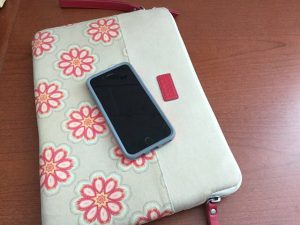
Be sure your technology is charged and ready for your virtual holiday visit. Photo Source: Kendra Zamojski
Other high-risk holiday related activities to avoid to help prevent the spread of the virus:
- Going shopping in crowded stores.
- Participating or being a spectator at a crowded parade, race or other holiday celebration.
- Attending large indoor gatherings with people from outside of your household.
- Using alcohol or drugs that may alter judgment and make it more difficult to practice Covid safety measures.
Things to consider before your gatherings:
To make the holiday less stressful be sure to practice a virtual session before the virtual holiday gathering. Make sure everyone involved knows how to connect to the virtual holiday celebration so the gathering will go more smoothly and hopefully experience less technical problems on that day.
We all had to adapt to many unexpected changes this year and the holidays will be no different. Just remember being diligent now will protect family and friends and help control the spread of the virus in our communities. Be sure to enjoy your unique holiday season this year, but here’s hoping for a less challenging 2021.
Stay safe! Enjoy your family and friends from a safe distance! Happy Holidays!
Source:
CDC: https://www.cdc.gov/coronavirus/2019-ncov/daily-life-coping/holidays.html

by Julie McMillian | Jun 22, 2020

Today’s Climate
Photo Source: UF/IFAS Photo Database
Many confuse the two words climate and weather. Weather is the day to day conditions of our atmosphere. Whereas, climate refers to the average of the weather over time. Weather depicts how we dress day to day and can change often. Climate refers more to the average weather over time. We generally must prepare for our climate by buying appropriate clothing and preparing our home for longer term weather conditions.
What causes the climate to change? There are three important greenhouse gases that have dramatically increased since industrialization: carbon dioxide, nitrous oxide and methane. The increases are primarily due to our changes in land use over time. These factors make our earth’s surface temperature warmer which affects our loss of sea ice and longer fire seasons, and can contribute to extreme weather events.
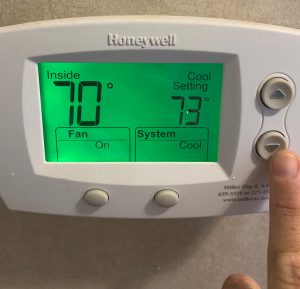
Adjust the temperature
Photo Source: Julie McMillian
The question is, what can I do in my own world and community to help on an individual basis? There are several ways that we can reduce our energy use of electricity at home which will help us to contribute to the bigger picture. Some simple suggestions are when you are not using the television, computer, lights, heating and cooling, try to turn them off or down for a while. Purchasing shades or curtains for your windows can keep your house cooler in the summer and fans may be able to replace the air conditioner on some occasions. When running the air, heat or hot water heater check your thermostat for energy saving features. Try to only run the dishwasher or washing machine with full loads and be sure to clean out your lint trap in the dryer so it has good airflow. You will find you might even save a few dollars by being mindful of your energy consumption.
Next, let’s talk about reducing greenhouse gases in our yards. Composting food scraps is a great way to reduce waste from landfills and turns your waste into reusable soil. Planting trees and plants helps to reduce carbon dioxide in the atmosphere. Plants store carbon and help to regulate temperatures in the home. Another thing to consider is, where does your water run off go? If water can be routed to your garden it is a win-win.
How do we plan our food system in our home? Reducing food waste has many benefits. We can save money, help our community, conserve energy and resources just by rethinking the way we plan our meals. If we buy more unprocessed foods, there will be less packaging. If we are able to grow our own food or just eat at home more, it cuts down on trips to restaurants and stores.
These are just a few ways to get you thinking about climate change in Florida. As a citizen, we can take action by staying informed and showing our support. If we hold ourselves accountable by looking at our personal impact, we may be surprised what we are leaving behind with our footprint. For more information on healthy living or other extension related topics, contact your local UF IFAS county extension office.
Supporting information for this article can be found in the UF/IFAS Extension EDIS publications:
Science Support for Climate Change Adaptation in South Florida
Climate Change Adaptation: New Perspectives for Natural Resources Management and Conservation
Energy Efficient Homes
UF/IFAS Extension is an Equal Opportunity Institution.

by Julie McMillian | May 11, 2020
What does your morning and evening routine consist of? Now that we are adjusting to our new normal of staying at home and social distancing, many routines are different than before. How about starting a routine of walking 30 minutes or an hour each day? There are so many positive benefits to even just adding 15 minutes to your schedule and most everyone, including children, can do it.
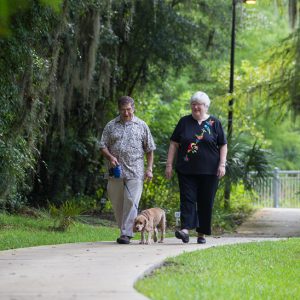
Walking is a great form of exercise that nearly everyone can do. (Photo source: Lyon Duong, UF/IFAS)
Walking improves your mood and reduces stress and anxiety. Who doesn’t need that kind of positive influence in their life right now? If you walk in the morning, it will provide you with energy for the rest of the day and walking in the evening helps you to sleep better at night. Taking a few extra steps each day can add some time to clear your head and add to your energy level while creating a positive mindset for other activities.
One of the other benefits of walking is burning calories. Burning calories may lead to weight loss. It seems that almost every American is always looking for a way to improve the fitness of their body. By exercising during a walk, you build stronger muscles, ligaments and tendons. Physically, walking can reduce your hips, tighten abdominal muscles, strengthen your arms, and tone your legs. Walking gives you a chance to improve balance, coordination and flexibility. Your feet can help to reduce the load on other joints while keeping knee joints healthy and lowering the risk of blood clots. Walking makes your heart stronger and reduces risk of stroke. A research team from the University of Michigan Medical School says that people who are in the 50s-60s age bracket who exercise regularly are 35 percent less likely to die in the next eight years than those who do not. Therefore, some walking each day could help you lead to a longer life.
Now that we have so many reasons to take a stroll each day, we must make sure to walk correctly to avoid injury. It is important to move freely and naturally while swinging your arms to avoid back problems. Keep your shoulder back with your head held high and eyes forward. Position your feet straight and push off with your hind leg to engage your hips. Watch for traffic if you are walking by a highway and of course practice social distancing for now. Maybe later ask a friend to join for a social aspect and to have accountability to someone. Keep a log to track progress. The CDC recommends 150 minutes of moderate activity per week to be considered active adults. That should add up to about 7,000 to 8,000 steps a day but if you can get 10,000, go for it! It is a great time to get into this daily routine and doesn’t require any special equipment or memberships.
So what are you waiting for? There is no better time to start stepping.
For more information on healthy living or other extension related topics, contact your local UF/IFAS Extension Agent.
Additional Resources:
Healthstyle: A Self-Test (UF/IFAS Extension)
Healthy Living: Beating Barriers to Physical Activity (UF/IFAS Extension)
Improving Savings, Health, and Happiness by Modifying How the Family Operates the Home (UF/IFAS Extension)
Walking: Your Steps to Health (Harvard Health)
UF/IFAS Extension is an Equal Opportunity Institution.
by Samantha Kennedy | Apr 10, 2018
Many of today’s commercial cleaners are petroleum-based, which may have harmful effects on human and environmental health. But have no fear! On the market today are many wonderful “green” cleaning products that are planet- (and you-) friendly and can be found alongside their more conventional cousins in the cleaning aisle. These products are non-toxic, biodegradable, non-petroleum-based, and are just as effective at getting rid of grime.
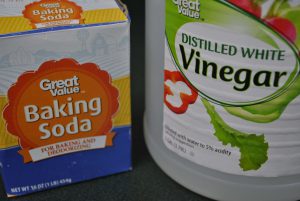
Two common household products used in homemade cleaners are vinegar and baking soda. Photo credit: Samantha Kennedy
They do, however, tend to be more expensive. If spending extra money isn’t your thing, you can still clean green” by taking advantage of a few everyday products you probably have in your pantry right now.
White vinegar and baking soda are two of the most effective cleaning products out there and cost just a fraction of what commercial cleaning products cost. Add a little warm water to either of these products and you have created a solution that can clean just about everything, from tile floors to coffee-stained mugs to sinks and showers.
Another great natural and inexpensive cleaning agent is borax. Found in the laundry aisle, it is great as an all-purpose cleaner when mixed with water and can be used on floors, countertops, sinks, and toilets. It is nonabrasive, has no toxic fumes, and is safe for the environment. Borax also doubles as a safe insecticide, by slowly poisoning ants, cockroaches, silverfish, and termites to death.
Other common household products that make great cleaners are salt, lemon juice, and rubbing alcohol. Hot water mixed with salt makes an excellent drain deodorizer. Lemon juice makes a terrific mild bleaching agent and air freshener. Rubbing alcohol makes a great sanitizer for countertops. It is also good for cleaning minor wounds and will kill those annoying ghost ants (and others) that often try to make a home in your kitchen.
Making your own household cleaners is safer, healthier, and less expensive. For some quick and easy cleaner recipes, please read “Homemade Household Cleaners.”
For more information about this and other Family and Consumer Sciences topics, please contact Samantha Kennedy at 850.926.3931 or skennedy@ufl.edu.













